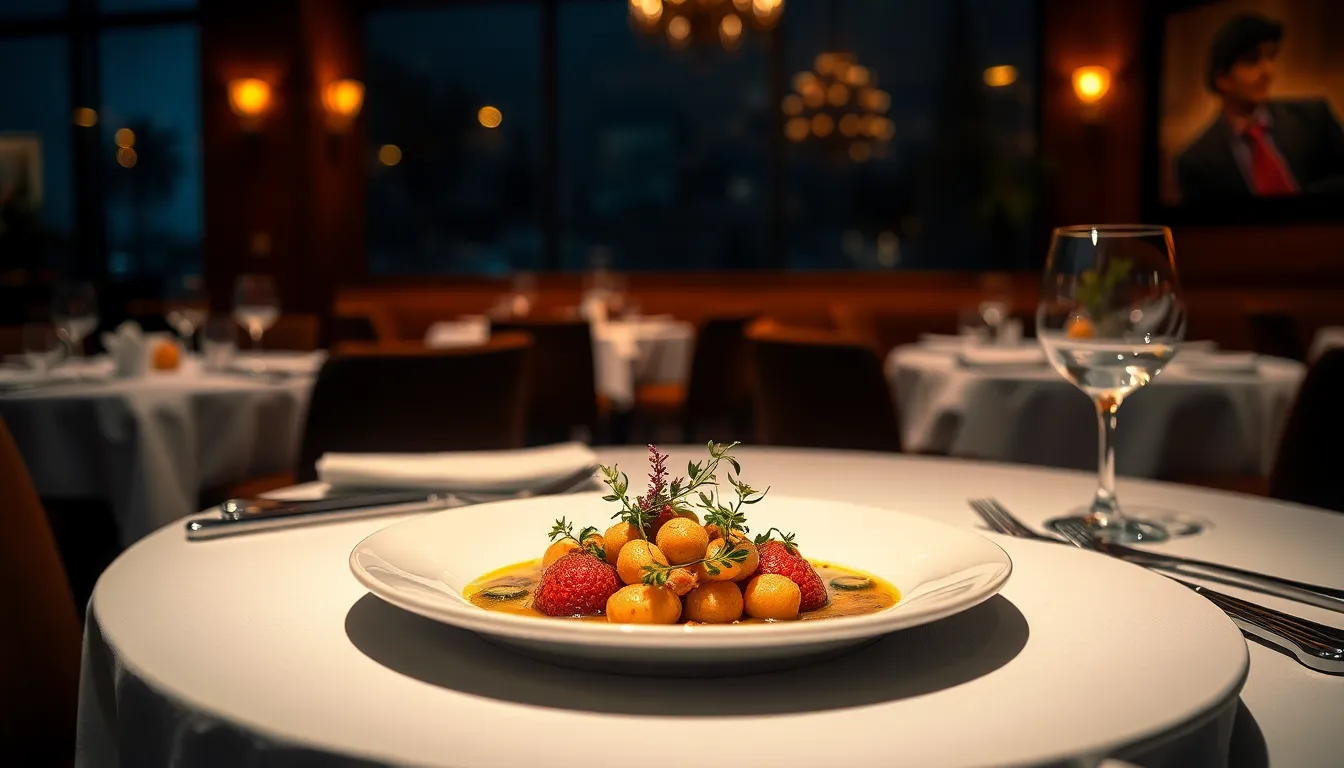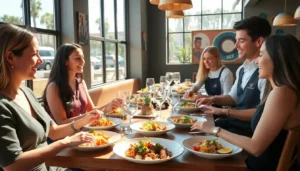Table of Contents
TogglePicture this: you’re sitting down to a meal that’s so good it could make a Michelin star blush. But how do you capture that magic? Enter the world of memorable meal evaluations. It’s not just about the taste; it’s an art form that combines flavors, presentation, and even the ambiance.
Understanding Memorable Meal Evaluations
Memorable meal evaluations involve more than just tasting food. They encompass a variety of sensory experiences and overall satisfaction.
Defining Memorable Meals
Memorable meals offer a combination of exceptional flavors, appealing presentation, and a comfortable ambiance. Diners often remember dishes that evoke strong emotional responses. Unique ingredients or innovative cooking techniques frequently elevate the meal experience. Additionally, the atmosphere of the restaurant, including the decor and service quality, significantly influences diners’ memories. A dish that resonates with cultural significance can also create lasting impressions.
Importance of Meal Evaluations
Meal evaluations play a crucial role in recognizing quality dining experiences. They assist chefs and restaurants in understanding customer preferences. Constructive feedback from diners helps identify strengths and areas for improvement. Establishments often depend on meal evaluations to enhance their offerings and stay competitive. These assessments guide culinary innovations and menu changes. Regular evaluations contribute to customer loyalty, as diners appreciate establishments that value their opinions.
Factors Influencing Memorable Meal Experiences

Memorable meals rely on multiple factors that enhance the dining experience. Each element plays a significant role in making meals unforgettable.
Flavor and Presentation
Flavor and presentation serve as cornerstones of memorable meals. Unique combinations of flavors create excitement on the palate. A beautifully plated dish captures attention and elevates the dining experience. Visual appeal influences expectations, as diners connect aesthetics with taste. When ingredients complement each other, they evoke stronger emotional responses. Creative presentations demonstrate a chef’s artistry, adding intrigue to familiar dishes. Distinct flavors distinguish memorable meals from ordinary ones, leaving lasting impressions on diners.
Atmosphere and Ambiance
Atmosphere and ambiance set the stage for delightful dining experiences. Comfortable seating arrangements enhance guest satisfaction. Lighting contributes to overall mood; dim lighting can create intimacy while bright lights may energize the space. The background music influences diners’ emotions, as specific genres can evoke nostalgia or relaxation. Decorations and layout create visual harmony, inviting guests to indulge in their meals. Engaging staff further enriches the dining atmosphere, providing attentive service that enhances memories. Ultimately, a well-crafted ambiance complements flavors and presentations, rounding out the complete dining experience.
Methodologies for Evaluating Memorable Meals
Evaluating memorable meals involves two main approaches: qualitative and quantitative. Each offers unique insights into the dining experience.
Qualitative vs. Quantitative Approaches
Qualitative approaches focus on subjective experiences, emphasizing emotions, flavors, and personal reflections. Diners share stories and descriptions, highlighting moments that impacted their meal. Quantitative methods rely on numerical data, assessing factors like satisfaction ratings and ingredient freshness scores. These metrics quantify aspects such as taste and service. Combining both methods provides a holistic view, allowing chefs and restaurateurs to harness feedback effectively.
Tools and Techniques for Evaluation
Several tools and techniques assist in meal evaluations. Surveys and questionnaires enable diners to express thoughts comprehensively. Standardized tasting sheets capture detailed sensory attributes, facilitating comparison among dishes. Observational techniques, such as customer behavior analysis during meals, reveal patterns in dining preferences. Digital apps streamline feedback collection, allowing for immediate responses from diners. By employing these tools, restaurants gain actionable insights to enhance meal quality and overall customer satisfaction.
Case Studies of Memorable Meal Evaluations
Memorable meal evaluations draw inspiration from various dining contexts, highlighting the intrinsic elements that contribute to lasting impressions. Two primary categories emerge: celebrated restaurants and home-cooked meals.
Celebrated Restaurants
Top restaurants often excel in creating memorable meals through innovative menus and exceptional service. Diners frequently experience intricate flavor profiles, such as miso-caramel pairs or truffle-infused oils. Presentation might involve artistic plating techniques, transforming each dish into a visual feast. Atmosphere adds to the experience, as lighting and decor invite guests into a luxurious setting. Renowned Michelin-starred establishments exemplify these qualities, showcasing how meticulous attention to detail shapes unforgettable dining events. A recent study indicated that 85% of patrons prioritize ambiance, underlining its significance alongside taste and presentation.
Home-Cooked Meals
Home-cooked meals evoke nostalgia, often associated with family gatherings and cherished traditions. Ingredients play a crucial role, with fresh produce enhancing flavors in dishes like roasted vegetable medleys or handmade pasta. Personal touches elevate the dining experience, whether through secret recipes or heirloom cooking methods. Comfort and warmth define the atmosphere, inviting loved ones to reconnect. Surveys reveal that 90% of individuals connect memories to home-cooked meals, reinforcing the emotional impact of these dining experiences. The simplicity of home cooking, combined with genuine connections, cements the place of these meals in the hearts of many.
Memorable meal evaluations reveal the intricate layers that contribute to a dining experience. By focusing on flavors presentation and ambiance diners can appreciate the full spectrum of what makes a meal unforgettable. This multifaceted approach not only enhances individual satisfaction but also aids restaurants in refining their culinary offerings.
Through constructive feedback and innovative evaluation methods establishments can better understand their customers’ preferences. This understanding fosters loyalty and encourages continuous improvement. Ultimately memorable meals resonate beyond the plate creating lasting impressions that diners carry with them long after the last bite.







